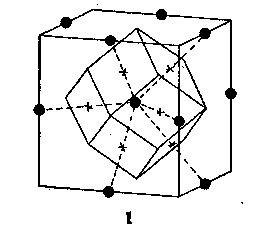
Resonance Raman spectroscopy is also an important probe of the chemistry of metal centred complexes, fullerenes, polydiacetylenes and other "exotic" molecules which strongly absorb in the visible. For biological chromophores, this means that absorbing active centres can be specifically probed by visible excitation wavelengths, and not the surrounding protein matrix (which would require UV lasers to bring into resonance).

Resonance selectivity has a further practical use, in that spectrum of the chromophoric moiety is resonance enhanced and that of the surrounding environment is not. Metalloporphyrins, carotenoids and several other classes of biologically important molecules have strongly allowed electronic transitions in the visible, making them ideal candidates for resonance Raman spectroscopy. Thus the resonance Raman technique is used for providing both structural and electronic insight into species of interest. This resonance enhancement or resonance Raman effect can be extremely useful, not just in significantly lowering the detection limits, but also in introducing electronic selectivety. If the wavelength of the exciting laser coincides with an electronic absorption of a molecule, the intensity of Raman-active vibrations associated with the absorbing chromophore are enhanced by a factor of 102 to 104.

However, there are several processes which can be used to enhance the sensitivity of a Raman measurement. The number of photons Raman scattered is quite small. Hence, in Raman spectroscopy, only the more intense Stokes line is normally measured - Raman scattering is a relatively weak process. This occurs because only molecules that are vibrationally excited prior to irradiation can give rise to the anti-Stokes line. Also, note that the anti-Stokes line is much less intense than the Stokes line. This occurs because in either case one vibrational quantum of energy is gained or lost. In the example spectrum, notice that the Stokes and anti-Stokes lines are equally displaced from the Rayleigh line. The energy increase or decrease from the excitation is related to the vibrational energy spacing in the ground electronic state of the molecule and therefore the wavenumber of the Stokes and anti-Stokes lines are a direct measure of the vibrational energies of the molecule. The energy of the scattered radiation is less than the incident radiation for the Stokes line and the energy of the scattered radiation is more than the incident radiation for the anti-Stokes line. A schematic Raman spectrum may appear as shown below. The energy increase or decrease is related to the vibrational energy levels in the ground electronic state of the molecule, and as such, the observed Raman shift of the Stokes and anti-Stokes features are a direct measure of the vibrational energies of the molecule. Stokes radiation occurs at lower energy (longer wavelength) than the Rayleigh radiation, and anti-Stokes radiation has greater energy. A simplified energy diagram that illustrates these concepts is shown below. Raman shifted photons can be of either higher or lower energy, depending upon the vibrational state of the molecule under study.

It is the shift in wavelength of the inelastically scattered radiation that provides the chemical and structural information. Webinar: Raman Spectroscopy - A New Dawn In Clinical Diagnosis What are the Basic Principles of Raman Spectroscopy


 0 kommentar(er)
0 kommentar(er)
